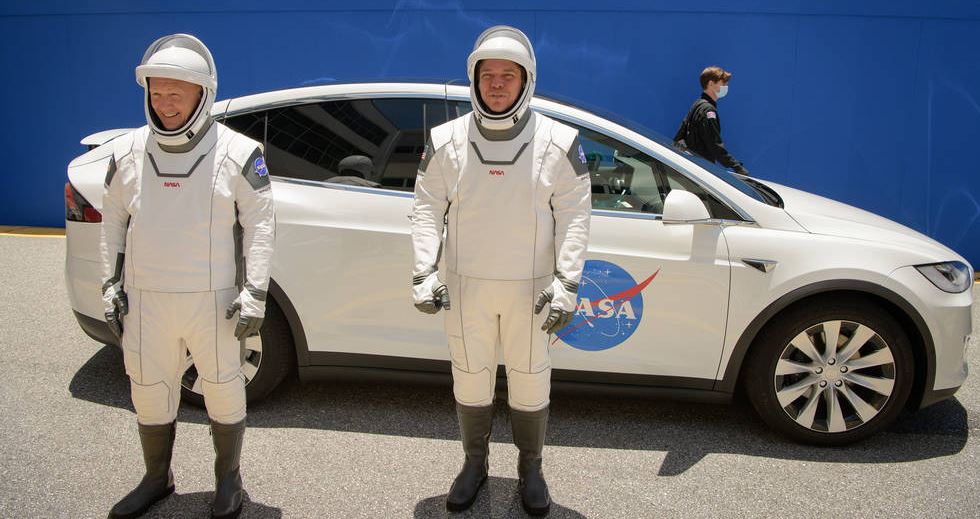Today, Wednesday, May 27 at 22:33 Italian time, astronauts Bob Behnken and Doug Hurley will depart for space aboard the SpaceX Crew Dragon, which will take off with a Falcon 9 rocket from NASA’s Kennedy Space Center in Florida.
The mission, known as Demo-2, will take the astronauts to the International Space Station. Their arrival at the space station is scheduled for May 28th and the astronauts could stay in space for one to four months.
The partnership between NASA and SpaceX
This new partnership between Elon Musk’s company and NASA represents the third between the two organizations, which have been operating joint cargo flights to the space station since 2012.
Although the fate of tomorrow’s test launch is not yet certain, NASA is already planning a next manned mission, called Crew-1, scheduled for August 30.
The duration of the Demo-2 is not currently specified: NASA has stated that the two astronauts on board the flight will spend between one and four months in orbit. The duration of the mission is limited by the capsule’s solar arrays, which do not have the same specifications as the standard Dragon crew capsules; in fact, they are tested to remain safely in space for about 120 days.

Credits: NASA/ Bill Ingalls
Meanwhile, the team that will be deployed on the Crew-1 mission is already training for the August 30 launch. Four astronauts will be on board the Crew-1 capsule: NASA’s Michael Hopkins, NASA’s Victor Glover and Shannon Walker and Japan’s Soichi Noguchi. The crew will remain in orbit for about 6 and a half months, the current standard length of stay of a space station.
The four astronauts will join the trio of crew members who currently live and work in the orbiting laboratory: NASA’s Chris Cassidy and Russian cosmonauts Anatoly Ivanishin and Ivan Vagner. These three astronauts were launched in April and will return to Earth in October.
Before their return, another Russian Soyuz capsule will be launched with a crew including a NASA astronaut.
A new launch after nine years
Demo-2 will be the first manned launch into orbit from American soil since NASA’s shuttle program ended in 2011.
The astronauts arrived at the Kennedy Space Center on May 20, one week before the launch, where they prepared hard for space travel.
The launch, for its historical significance, would normally attract huge crowds to watch the rocket take off with Behnken and Hurley on board.
However, the Demo-2 mission does not take off in standard circumstances: the event takes place in the middle of the coronavirus pandemic that has caused restrictions on travel and social behaviour and, in addition to having led to the closure of several factories, has led most of the NASA employees to work from home, just like all of us.
Because of the concerns surrounding the new coronavirus, NASA chief Jim Bridenstine urged people to stay home for the launch and watch it on TV or the Internet.
Credits: NASA
“We’re asking people to join us on this launch, but to do it from home and not go to the Kennedy Space Center,” he said in a recent video conference call. The Kennedy Space Center, in fact, will be closed to the public until Thursday, May 28, the day after the launch.
“Our country has been through a lot. But this is a unique moment when the whole of America can stop for a moment and watch our country do something extraordinary again” Bridenstine added. “This is a unique opportunity to bring all of America together in one moment and say, ‘Look how bright the future is. That’s what this launch is all about.
It will also be possible to stream live with this video.
Weather conditions
Current forecasts predict 40% good conditions for the May 27 launch, according to the 45th Weather Squadron of the United States Air Force.
If NASA and SpaceX fail to launch this week, they will have to wait until May 30 for the next attempt.